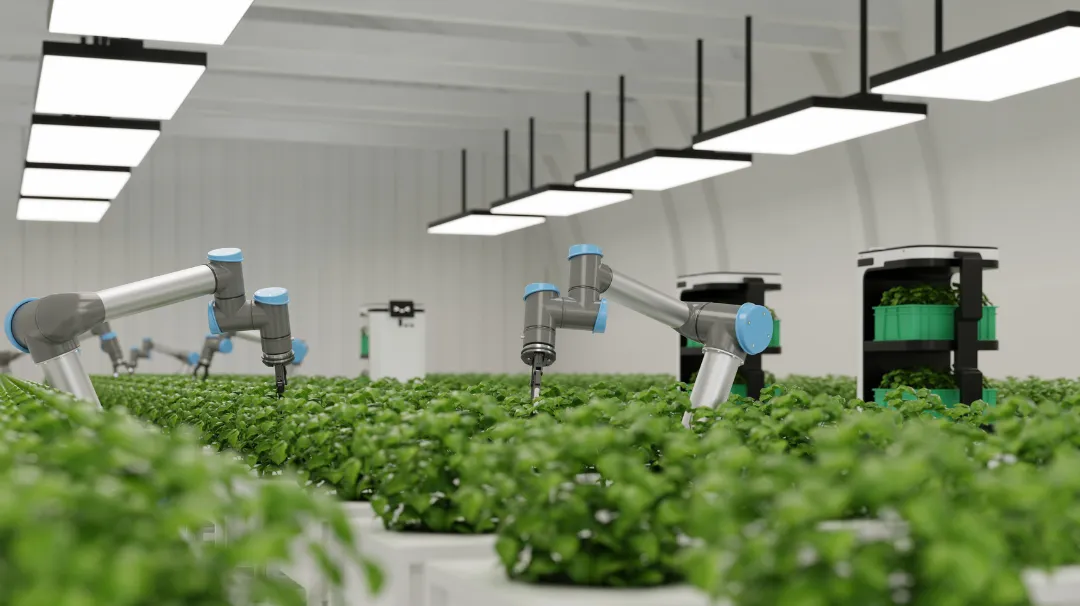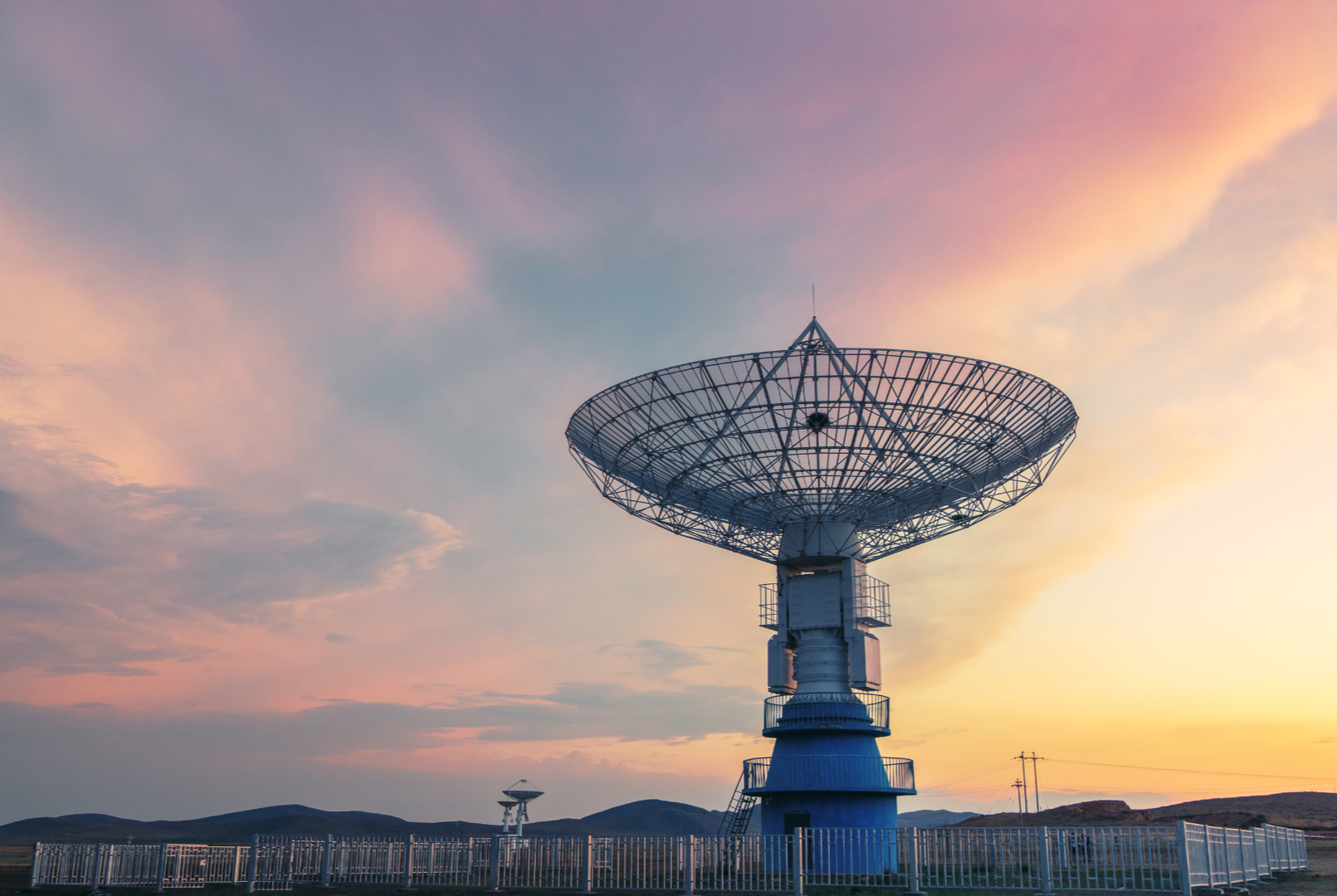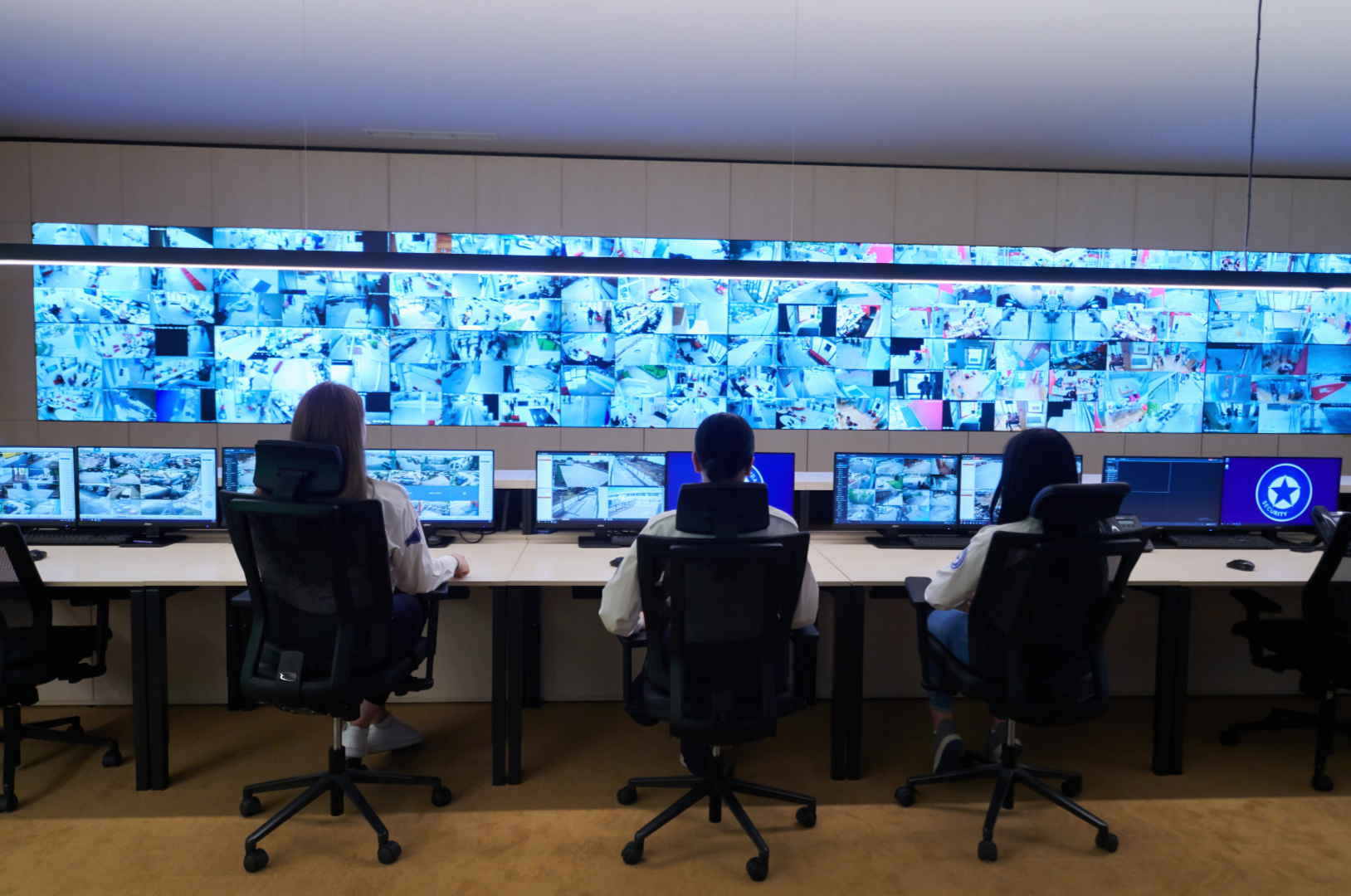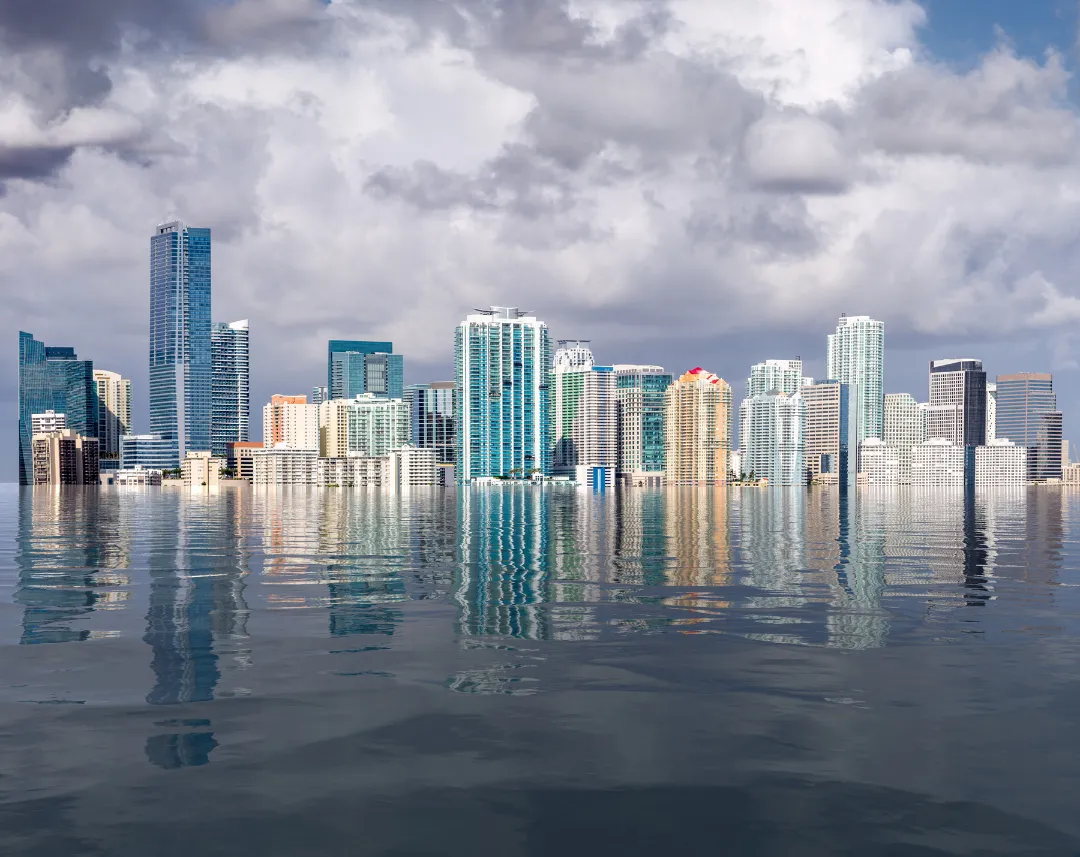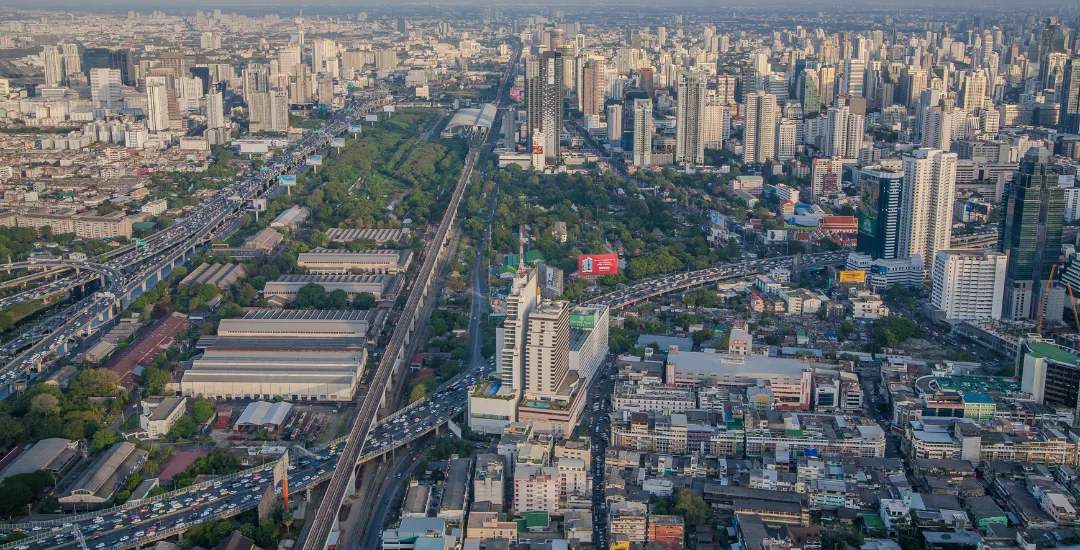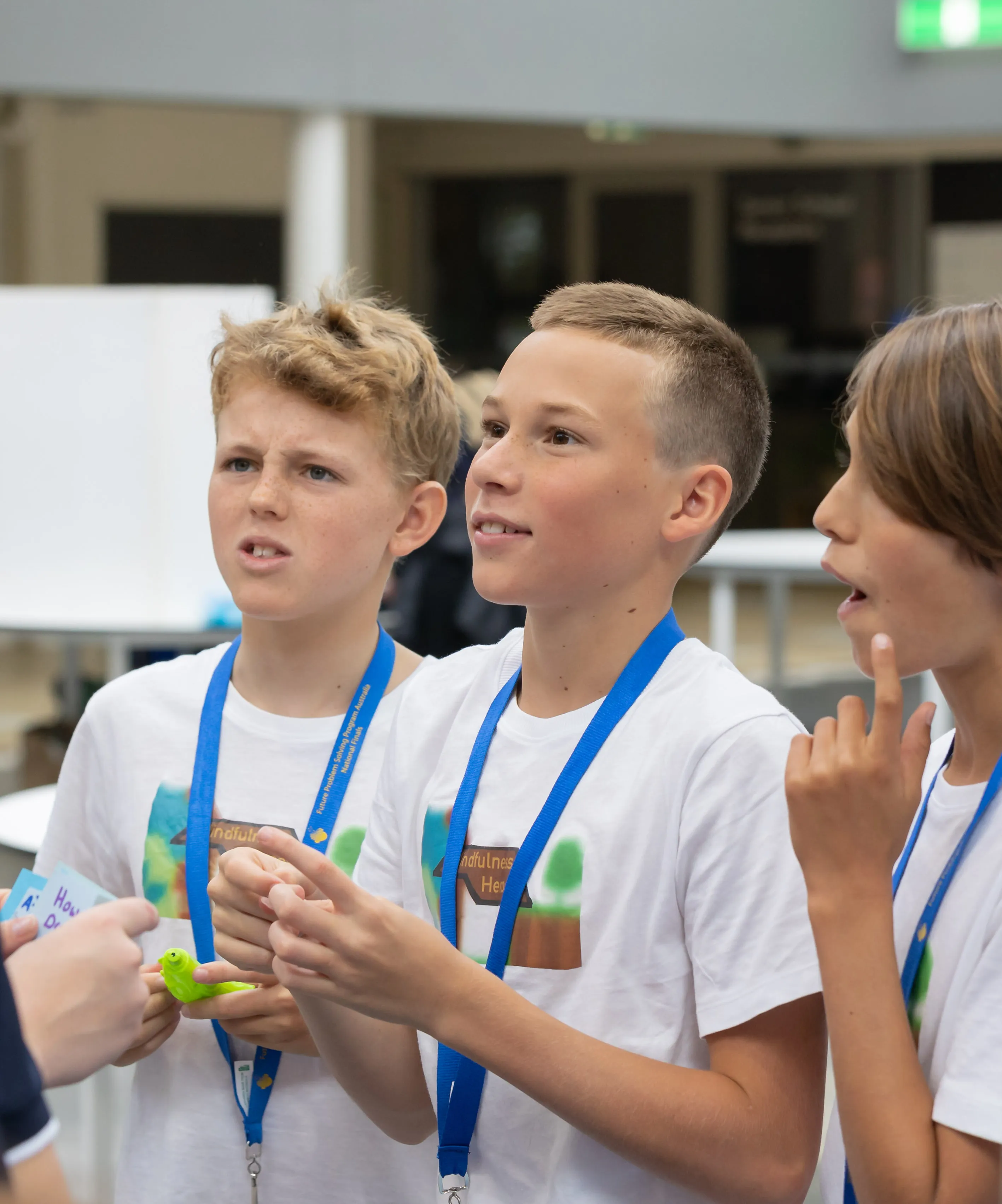Topics
2026 Topics
Invasive Species
Invasive species are non-native organisms that, when introduced to a new environment, can cause harm to native ecosystems, biodiversity, and even economic activities. Due to a lack of natural competitors or predators, these species often outcompete or prey upon native plants and animals, disrupting the delicate balance of local ecosystems. Invasive species can be plants, animals, or microorganisms, and they are typically introduced through human activities, such as trade, travel, or deliberate release.
The impacts of invasive species are far-reaching and can result in habitat degradation, loss of native species, and economic losses in agriculture and forestry. Prevention, early detection, and management efforts may lessen the damage caused by the invasive species. Management includes the removal of invasive species and restoration of affected ecosystems. This can be time-consuming, economically punishing, and not always successful. It is a critical challenge in conservation and environmental management, emphasising the importance of vigilance and responsible practices to protect the integrity of natural environments.
Space Exploration
Space exploration involves the investigation, discovery, and utilisation of outer space, including celestial bodies like planets, moons, and stars. It uses spacecraft, satellites, and telescopes to observe and study the universe. It also includes missions to explore, land on, and perhaps even establish a human presence on other celestial bodies.
Space exploration has yielded remarkable scientific discoveries, including understanding the universe’s origins, the search for extraterrestrial life, and technological developments such as advancements in materials, computing, and telecommunications. Government space agencies and private companies worldwide are engaged in ongoing collaborative efforts to explore the vastness of space. Space exploration promises to unravel some of the universe’s greatest mysteries while pushing the boundaries of human knowledge and achievement.
Video Games
Video games are a popular form of entertainment and interactive media that have evolved into a multi-billion-dollar industry. They encompass various digital experiences, from action-packed adventures and strategy games to immersive simulations and educational tools. Video games are typically played on computers, gaming consoles, or mobile devices and involve players engaging with digital worlds, characters, and challenges.
Video games offer diverse experiences, from competitive eSports competitions to solo adventures and social experiences where players collaborate or compete with others online. Video games have become a significant cultural phenomenon, with a global fan base and dedicated communities. They are even recognized as art forms. These games continue to push the boundaries of technology, storytelling, and creativity, influencing not only entertainment but also fields like education, cognitive science, and virtual reality.
Surveillance
Surveillance is the systematic and continuous monitoring, observation, or tracking of individuals, groups, or activities, often conducted by governments, businesses, organisations, or individuals. Surveillance uses various methods, including electronic surveillance, video monitoring, data collection, and even physical surveillance by law enforcement or intelligence agencies.
Surveillance can serve legitimate purposes such as public safety, national security, and crime prevention, but it also raises significant privacy and civil liberty concerns. In the digital age, issues surrounding surveillance have become increasingly complex, as personal data and online behaviours are subject to investigation by both public and private entities. The struggle to balance between security and privacy is an ongoing debate, with discussions focused on defining the limits, legality, and ethical implications of surveillance practices, especially in the context of technology and the digital landscape.
2026 Creative Writing (Scenario Writing) Topics
Invasive Species
Space Exploration
Video Games
Surveillance
2026 Storytelling (Scenario Performance) topics
Invasive Species
Space Exploration
Video Games
2025 Topics
Food Security
Food security is different in every place and yet impacts every society. Infrastructure, environmental conditions, and political stability can all have significant impacts on the production of food. Environmental events such as droughts and rising sea levels also impact existing food sources. Economic, legal, and social barriers may thwart access to available food. Political conflicts, for example, interrupt supply chains and divert food away from those in need. Even when there is enough food available, and people have access to it, their food security may be threatened by the safety of the food.
Rising Sea Levels
Historically, human civilizations have responded to the risk of rising sea levels with retreat and adaptation. As our cities have become more permanent in modern times, defensiveness is the preferred strategy. The adequate protection of low-lying regions and coastal cities from flooding, land loss, water-logging, and groundwater salinity is costly and technologically complex. Small island nations are most vulnerable to the relocation of coastal communities. Sea level rise is already occurring around the globe at unprecedented rates. The challenges will only continue to grow in the next few decades. It is important for scientists and engineers to work directly with communities to create policies that work for the unique circumstances of each vulnerable coastline.
Agricultural Industry
The agricultural industry is not only a vital component of global economies, but also a critical driver of environmental impact and social development. It encompasses a wide range of activities, from crop cultivation to livestock management. It provides food, textiles and biofuels to a growing population. While industrial agriculture has improved crop yields and increased accessibility and affordability, past and current farming practices have raised concerns related to sustainability. As the world's largest consumer of water and land, agriculture must seek sustainable farming practices to ensure its survival. The excessive use of these resources raises questions about the long-term viability of current agricultural practices. Addressing challenges will require innovative approaches, sustainable farming practices, and lastly, an analysis of how we produce and consume food.
Nanotechnology
Nanotechnology is widely used in food industries, medicine, energy, automobiles, the environment, electronics, textiles, and cosmetics. Nanotechnology has direct benefits for medicine and the environment, but it may have unintended effects, like all technologies. Nanoparticles of typically unharmful materials, for example, can be toxic if inhaled. Not easily observed, nanotechnology poses risks to security and privacy.
2024 Topics
Tourism
Tourism not only benefits host locales but those on holiday. Travel enriches their lives, expands their understanding of people and cultures, while also serving as a respite from daily life. The economic stability of such destinations depends on the sustainability of their tourist trade. As the popularity of such destinations grows, international corporations and developers typically flock to these growing places, trying to capitalize on the financial possibilities. There is money to be made in building hotels, restaurants, and in developing an area’s growing tourism industry. As outside groups seek to attract tourists and the revenue they generate, locals often struggle to maintain their location's unique appeal and ability to support local venues. As this build-up occurs, local people can have their cultures exploited, lands destroyed, and their local businesses put in jeopardy. As the tourism sector grows and expands, we are seeing the expansion of the Special Interest (SIT) market - tourists wishing to match their vacations with their interests (e.g., ecotourism, wellness tourism, event tourism, ancestry tourism, etc.). How will changing forms and trends of tourism impact tourists and hosts alike? How can the advantages of expanding tourism be balanced with the protection of destinations?

Urbanisation
Today nearly half the world's population lives in an urban area. By 2050, that number is expected to reach 70% due to this increase in Urbanization. Urban areas and their large populations often hold power over governance, economic development, and international connectivity beyond their immediate regions. With proper planning, urban centres can provide educational and economic opportunities to residents not found elsewhere. However, they can also easily give rise to slums and increase income inequality. With growing footprints, cities are also struggling to provide basic needs, essential services, and safety. Future urban planners must address tough questions: What qualities in society should be valued most? What is fair and equitable? Whose interests will be served first? Planners must balance the speed of decision-making with the need for thoughtful, well-considered programs for development. As urban areas expand, how can we develop areas that are efficient, resilient, and inclusive?
Antarctica
Antarctica, the highest, driest, coldest continent, has no permanent population and is governed by a collection of agreements between fifty-four countries. The Antarctic Treaty System designates the entire continent and surrounding waters for scientific endeavours, bans military activity, and promotes environmental research and preservation. Although Antarctica remains the most remote place on Earth, it is highly regulated and heavily impacted by activities around the globe. Parts of the continent are polluted by sewage, discarded machinery, fuel products, and rubbish. Antarctica is thought to be rich in minerals and resources, though an 'indefinite' ban on mining is in place through 2048. Antarctica also holds over 60% of the Earth's fresh water in an ice sheet that contains 90% of the Earth's total ice volume. As global temperatures rise, these are breaking apart and melting faster, endangering local wildlife and entire ecosystems. Without a consistent population or a sovereign state, Antarctica possesses a unique
space within political, economic, and environmental crossroads. How can Antarctica be sustainably utilized yet simultaneously preserved to best benefit our global population?
Autonomous Transportation
Our transport needs, desires, and realities are rapidly changing due to global growth and increased connectivity. As modes of transportation continue to evolve, increasing levels of complexity and efficiency are pursued. What role will autonomous vehicles, cars, airplanes, ships, etc., which operate without human intervention, play in this pursuit? Their development continues to increase exponentially with advancing technological capabilities. Since all scenarios are not programmable, autonomous vehicles must learn and react. They do this by surveying their environment with multiple sensors and utilizing artificial intelligence (AI) to process vast amounts of data. Autonomous vehicles can deliver on demand, refuel, park, and store themselves. By creating a network of these vehicles, entire systems of transport could become autonomous, controlled by a central AI. How will the efficiency of autonomous vehicles affect the development of transportation, on land and sea, in the air, and possibly space? How will autonomous transport cope with unexpected risk situations and ethical decisions? In what ways will autonomous transport impact jobs, industries, infrastructure, and lifestyles?
2023 Topics
E-Waste
Electronic devices are often replaced with the latest version at an alarmingly fast pace. These constant upgrades add to E-Waste significantly impacting the environment and reducing natural resources while consumer demand is being met. Tens of millions of tons of such materials are discarded every year worldwide. Electronic products are full of hazardous substances such as toxic materials and heavy metals that can threaten humans, plants, animals. One method of disposal often employed by developed states is to offload e-waste to low-income countries for resale or demolition. This offloading places developing nations at greater risk of exposure to toxic chemicals and materials. Meanwhile, the high rate of device upgrades in developed countries has significant consequences for both people and the environment. What impact does planned disposal have on the amount of e-waste? What incentives can be developed to promote software upgrades for existing devices? As the appetite for ever-increasing technological devices continues, what are the implications for how we dispose of these devices? How can more effective and ethical responses to recycling and disposal policies be encouraged to protect human life and the global environment in the future.
Digital Realities
Technologically, virtual reality is widespread and expanding its application through augmented, enhanced, mixed, and other forms of digital realities. The options and opportunities for its application appear boundless through the integration of 3-D images, gaming, computer-assisted instruction, equipment simulators, and entertainment platforms. The imposition of holographic images over real-world views have applications ranging from education, archaeology, and engineering, to sports training, video games, and artistic expression. The utilization of augmented reality technology is already making significant changes to the manufacturing industry. What other industries will it revolutionize? The inclusion of haptic, visual, and auditory overlays can be both constructive and destructive to users. New opportunities are provided to individuals with disabilities. New treatments are made available to the ill. How will enhanced reality impact human interactions? Digital reality is constantly evolving with advantages for all fields. How will we deal with the fiscal, educational, and psycho-social issues that might arise?
Robotic Workforce
Machines were developed to assist with dangerous and difficult jobs. At present, unskilled human labour is being replaced with robotics more quickly than at any time in history. Advancements of such machines move technology closer and closer to lights-out manufacturing. In countries with robust national safety nets, these changes are viewed as inevitable, and they have begun to explore new human employment concepts. Robotic workers often provide for human safety as in the case of bomb disposal. Laborers are fearful of how these looming employment changes and uncertain of how their work life will proceed. A robotic workforce's effects go beyond manufacturing as university-trained individuals such as lawyers and accountants are already being impacted by automation. What will the human workforce of the future look like? Will specialized training and education be needed for a combined human and robotic workforce? What will our future work force look like? How will our future economy be impacted by robotics in the workforce?
Throw Away Society
Consumerism has promoted a 'throw-away' society – one in which people do not keep things for very long, preferring single-use and disposable items. This societal approach leads to overconsumption of
short-term items instead of durable goods that can be repaired. Widespread social influencing often encourages people to focus on the consumption, ownership, and display of material possessions to
mark an individual's social status, identity, and standing. This impacts the environment, lifestyles, and distribution of wealth. Consumerism stretches the world's limited natural resources. Production is
dictated by consumer demand, and businesses try to provide consumers with a growing number of options, including branded goods, to stay afloat. Many products are often fads or are adapted and modified regularly to entice consumers to buy the upgrades despite already having durable ones. Constant upgrades are sought to achieve greater social standing through material possession instead of meaningful acts. How can societies value all their members while allowing for - and encouraging - individual perspectives and desires? What are the appropriate balances between local values and global aspirations for consumers?
2022 Topics
WATER SUPPLY
In many parts of the world, freshwater is in short supply. Water is often pumped for miles, streams diverted and reservoirs and dams are constructed to provide for the growing populations in dry areas. As water levels drop and aquifers decline, people become more concerned about preserving their water resources. More than 2 billion people lack access to safe drinking water services, and more than 4 billion lack safely managed sanitation services. Differing governmental and commercial demands must be balanced so that communities have enough safe water for their needs. As available water supplies deplete, adjacent areas begin to battle with water contracts and water rights. How might the right to access clean water be achieved? How will regulations shape the future of access to water? How will water scarcity shape society?
BUILDING GREEN
The world is now more urbanized than ever before, and more and more people are flocking to live in large cities. Singapore was once known as the ‘Garden City,’ now it is being promoted as the ‘Garden in the City’ as new buildings incorporate trees and other greenery in their designs. Many quickly growing population centers are more environmentally aware as they expand the living spaces for their citizens. This awareness is not just a case of saving the environment and reducing emissions; it is a matter of necessity for creating healthy cities. Buildings can be designed to conserve both energy and water while improving the indoor and outdoor environment. Advancing technology is changing how architects are incorporating sustainable living practices into buildings. Light-based modulated sunlight, improved insulation, enhanced ventilation, eco-friendly building materials – are a few of the ecologically-preferred innovations changing the face and function of buildings. Some buildings now incorporate wind turbines to provide the necessary energy to power the building. Will these developments solve the problems they have set out to address? Will these change the way cities work and the way people live in them? Will these changes improve safety during natural disasters or introduce new problems?
INSECTS
Insects - human's best friends and worst enemies. We are surrounded by more than a million species of insects. Without them, humankind couldn't survive. Some insects destroy crops and carry diseases. Mosquitoes, which carry diseases such as malaria, dengue fever, Ross River, Zika, and West Nile viruses, kill and maim more people each year than any other animal. Others do essential jobs like pollinate blossoms, aerate the soil, decompose dead plant material, or eat other harmful insects, making them essential to the food web. As weather patterns and temperatures change, the distribution and habitat of many insect species are likely to change dramatically. The numbers of bees around the world have been radically reduced due to disease. How does the reduction of some species and relocation of others impact health, agriculture, and horticulture?
Over 1,900 insect species have been identified as suitable for human consumption and animal feed and could assure food security. Incorporating insects into the human food and medical supply indicates the ever-growing importance of insects in the world. Will insects and their products, such as genetically modified mosquitoes or manuka honey help to fight diseases? Will toasted grubs, fried crickets, and other edible insects become important global protein choices?
MINING
Mining is a long-standing means of gathering a wide range of resources vital to aspects of everyday life. The growing demands of mined materials continues to see the mining industry expand at an incredible pace. The technologies in use today and projected for the future are more minerals intensive than ever before. While technology has made mining both safer and more environmentally sensitive than any other time in history, environmental and other risks remain. Yet without the collection of these important materials, the cornerstones of society like buildings, machines, and communication would not be possible. With environmental protections varying greatly from country-to-country, how can the world collaborate on the best way to extract and share geological materials? With mining as the foundation of countless communities, how will they be impacted by the changing landscape of mining? In the future, are there new areas that might be mined for resources?
2021 Topics
Youth in Competitive Sports
Millions of children around the world participate in competitive youth sports every year. Involvement in organized sports teaches many essential life skills – teamwork, confidence, the value of hard work, and discipline. While some competitive sports promote activity and a healthy lifestyle, others build skills such as mental agility. The hyper-competitiveness of youth sports raises concerns that children are pushed too hard to win and succeed. The sports options for youth are also evolving, as competitive e-sports emerge. Competitive sports can heighten aggression, pressure to win, and put children – who are still growing and developing – at risk for injuries. In many places, increasing costs of club sport-memberships and insurance exclude those who need social interaction and fitness the most. The costs of maintaining and running facilities can also limit the accessibility for youth. How much should we push young people to participate in competitive sports? Do the benefits of structured competition outweigh the costs of over-competitive behavior and possible injury? How does participation in sports impact the well being of youth and their families?
Wearable Technology
Traditionally, clothing and accessories have all been developed to fill basic needs. They provide warmth, protection from the elements or injury, and even serve to attract attention. Recently, the industry for wearable technology has transformed the way we think about clothing and accessories. Wearables have rapidly expanded to include heating elements, internet connections, watches, body monitors, and more. As more people grow accustomed to wearables in their daily lives, the possibilities for what the technologies can do are virtually limitless. They already monitor vital signs, send information to medical professionals, and even give individuals the ability to soar like a bird in personal flight suits. Smart sports uniforms can now reduce and identify injuries by regulating body temperature, supporting muscles and tendons, and gauging the force of impact. Attire with virtual reality functions is currently being developed to push this sector even further. How will wearable technology enhance or jeopardize real-life experiences and connections with others? Where in the world could wearable technologies allow humans to survive? What advantages or disadvantages are inherent in the inclusion of technology in our clothing and on our bodies?
Human Environmental Impact
Humans have always impacted the environment. Over time, the effects have increased as industrialization, urbanization, deforestation, processing of natural resources, the burning of fossil fuels and more technologies have developed. Examples of human’s impact on the environment are everywhere.
Feeding the world’s growing population has adverse environmental effects such as overgrazing, deforestation, and agriculture-induced soil erosion. Water pollution from pesticides and fertilizers impacts the quality of water available for specific populations. Clearing of land and overfishing result in loss of biodiversity and disturbances to ecosystems. Industrialization and urbanization cause the release of toxic solid, liquid, or gaseous waste materials and are the catalyst for serious environmental hazards. Water pollution as a result of poor disposal of sewage wastes, solid wastes, and other industrial wastes, may spread diseases and create an unfit environment for human activities. Industrialization has also increased consumption of natural resources for the production of goods, leading to a significant loss of nonrenewable resources and excessive waste. Activities like mining and dam construction cause habitat destruction. Trends like “fast fashion” contribute to why the fashion industry is the second-leading cause of pollution in the environment. What are our challenges moving forward to create a balance between basic human needs and our need to preserve or create an environment that is fit for continued quality human existence and growth?
Personalised Medicine
What if your doctor could diagnose you before you experience symptoms? Using information from an individuals’ genetic and molecular profile, researchers have begun to create patient-specific treatments with a level of precision never before seen. Personalized Medicine enables healthcare providers to use a patient’s cells to combat precisely identified diseases at an unprecedented pace.
Researchers at universities, biotech companies, laboratories, and pharmaceutical companies are continually making discoveries. Doctors and other healthcare professionals continue to explore how these discoveries can help patients and increase our knowledge about diseases. The pharmaceutical industry is developing medications that tailored to an individual patient’s genetic makeup. The costs of genetic tests are decreasing as their availability increases. Even with better affordability, how accessible will individualized advanced treatments be? Will insurance companies cover them? The increasing specificity of personal health information raises many concerns about the protection of personal data. How will Personalized Medicine account for the impact of external/environmental factors on an individual’s health?
2020 TOPICS
International Travel
Most people dream of visiting new and exciting places to experience culture, cuisine, and local entertainment through travel. Transportation technology makes it easier and faster than ever before to get from one country to another although travel can be very expensive and time-consuming for many people. Heightened safety concerns often mean changing security requirements and government screening processes for crossing borders.
Some experts believe that technology may begin to replace in-person travel. VR-AR-MR (Virtual Reality / Augmented Reality / Mixed Reality), are immediate, involving, engaging and immersive types of entertainment that can accessed anywhere in the world. This could cause travel to boom if people, having used these technologies, want to experience the world “for real.” People may be increasingly comfortable in both worlds: the physical real world, and the digital world that is constructed instantly and repeatedly to fit what each person wants and chooses, using immediately responsive networks.
How will the time, technology, and expense associated with travel impact the future of international travel and tourism?
Sleep Patterns
Approximately one-third of our lives is spent sleeping. For nearly a century, scientists have been able to record brain activity and see the dynamic changes during sleep. Lack of sleep can affect brain function, especially memory, language, and emotional balance. Physical effects include fatigue, stress and health problems including heart disease and obesity. Today, technology on our wrists can measure sleep habits and movements.
Globally, businesses developing sleep aids are witnessing significant growth due to the rising incidence of sleep disorders. This has been exacerbated by the growing senior population. It is manifest in increasing demand for sleeping pills due to stressful modern lifestyles and increasing numbers of initiatives by various health organizations to increase awareness about sleep disorders. Sleep medications often have undesirable side effects and patents of major sleep drugs expire. Wakefulness aids, stimulants and prescription drugs such as coffee, energy drinks, benzodiazepines and even illegal drugs are gaining in popularity as a perceived solution to the need to perform effectively despite sleep deprivation.
How might our over-scheduled lives and increased digital presence disrupt natural circadian and sleep patterns? Can the benefits of sleep be replicated? What new technologies might be available to help people monitor and adjust brain wave activity during sleep? Will scientists discover more about the genes that enable functionality with less sleep?
Gamification
Gamification isn’t just about leisure time digital or other games. Gamification applies the theories of game development that make games so alluring and creates sustained attention. Players and teams win points and rewards by completing designated tasks. Minecraft, for example, has been used by teachers for everything from computer science to social sciences to creative writing. Fitbit and tracking apps on the iWatch are increasingly popular and encourage competition – with yourself or with a group.
Gamification helps users focus on tasks that might normally be boring, and the process might be applied to fields such as customer loyalty, education, health, recreation, job training, self-improvement, household chores, fundraising, and activism. Gamification is being used by corporations to make marketing interactive, but it’s also being used to benefit individual health and well-being.
Is there a relationship between gamification and tech addiction? How might gamification impact education and learning, inside and outside formal schools, or even in the workplace? What are some of the ethical implications, particularly around user privacy? What role will companies have in the creation of tech products to “hook” their users or the use of gamification as an educational tool? Can gamification enhance human interactions?
Living in Poverty
Nearly half of the world’s population (more than 3.5 billion people) live in poverty. Of those 3.5 billion people, 1.4 live in extreme poverty, surviving on less than $US 1.25 per day.
Across the globe, many people struggle to have and sustain basic needs such as food, clean water, basic medical supplies, and adequate shelter. Some people are forced to leave their homes to travel to other places or countries to find menial work to send money home to support their families. Due to poverty, many people are unable to access education. Some adults deliberately suffer from malnutrition so that their children can have the food that is available. Children in severe poverty are often orphaned or they have been sent away because their parents cannot afford to care for them. Healthy food can be very difficult to come by for the poor due to lack of financial and monetary resources, meaning that they depend on cheap, unhealthy foods to sustain their lives.
What can be done globally to assist those suffering from extreme poverty? How can we reverse this trend in order to decrease the adverse impact of poverty on future generations?
2019 TOPICS
Mission to Moon, Mars, and Beyond
A spacecraft in orbit? A biosphere on extraterrestrial ground? Private and governmental organizations are already planning missions to set up research stations or even colonies on the Moon and Mars. Many see opportunities to learn more about our solar system, leading to a better understanding of Earth and ourselves; others question whether such missions are even feasible. One private agency is already seeking volunteers for a Mars mission. Space ventures provide an impetus for advancing knowledge and technologies with applications in space, as well as on Earth. Entrepreneurial and scientific opportunities abound to explore, to mine, and to engineer under distinct conditions. Pioneers will need to plan for a sustainable long-term stay, which will require vast investments of people, money, and other resources
Drones
Drones are among the most hyped products for aviation enthusiasts in recent years. Although originally developed for military use, drones or Unmanned Aerial Vehicles (UAVs) can be cool gadgets used for recreation. They can also be powerful tools for commerce, scientific research, agriculture, entertainment, photography, transportation, disaster relief, search and rescue, surveillance, and policing. UAVs can carry payloads and can be controlled remotely by a human operator or by an onboard computer. Basic drone models can be operated with little skill or training. Regulations on the use of UAVs are already in place in nations around the world, but technological advancements and expanded applications may outpace their regulation. While UAV use is growing exponentially, concerns are also escalating. Privacy intrusion, airspace violation, criminal use, surreptitious military operations, accidental crashes, terrorist threats, and other issues have raised alarms.
What does the future hold for UAV technological advancements and accessory enhancements? Will access to UAVs be equitable? How will the pending prevalence of drones in our daily lives affect society overall, especially in areas of personal rights and safety?
Food Loss & Waste
Hunger remains a concern in the developing world, and the resources required for food production are limited. About one-third of food produced globally is lost or wasted, leaving millions of people hungry and valuable resources squandered.
Food loss refers to a decrease in food for human consumption during production, post-harvest, and processing stages. Causes include poor harvesting techniques, weak infrastructure (markets, transportation, storage, cooling, packaging), contamination (bacteria, fungus, insects), and corruption. In addition to reduced availability, food loss contributes to higher costs, hurting farmers as well as those who cannot afford to buy their food.
Food losses that occur at retail and consumption stages are called food waste and refer to behaviors such as discarding edible food. Quality standards based on perfect appearance, misused “best-before-dates,” and careless consumer attitudes contribute to waste. Food waste is more common in the industrialized world, while food loss is a greater concern in developing nations.
Can food loss prevention combat hunger and raise incomes in developing nations? Can food waste be decreased without sacrificing quality or safety? What roles might technology or regulations serve? What are the economic, environmental, psychological, and societal implications? Can we improve global food security while meeting the needs of diverse consumers?
Coping with Stress
With exponential change and fast-paced trends in society comes an increase in stress. Stress can be physical, mental, or emotional. Living conditions, as well as societal and personal expectations, can lead to higher levels of stress-related hormones. In some parts of the world, people find it difficult to cope with longer work hours and less leisure time as they attempt to meet society’s perceived expectations. Social media is a constant presence, delivering both subtle and overt pressures.
Most people experience stress, but individuals respond differently. Stress can be a useful motivator in the face of challenges or danger, but negative impacts can result from excessive stress. Medical and psychological problems can emerge or be exacerbated. Scientific data show that physical activity and relaxation techniques are samples of ways to reduce these negative impacts.
What are the personal and societal impacts of stress? Do different countries and cultures deal with stress the same way? How can we promote healthier lifestyles that help people to cope with stress?
2018 TOPICS
Spread of Infectious Disease
Each year, approximately 52 million people suffer from infectious
diseases around the world. Seventeen million deaths per year result
from these diseases. With affordable global travel and more
people living in cities, infectious diseases may spread rapidly across
the globe. How can the spread of infectious disease be controlled? How
can the health of people around the world be safeguarded?
Toxic Materials
Toxic materials are everywhere: heavy metals in electronics, flame
retardants in furniture and clothing, pesticides in our food, and
harmful chemicals in plastics. Poisonous chemicals are linked to cancer
and birth defects. Although certain chemicals are known to be
hazardous, current regulation systems allow them to continue to be
brought into homes via many products. How can we become better aware of
the dangers associated with toxic wastes? What will happen if we
increase our reliance on these materials?
Philanthrocapitalism
Philanthrocapitalism is a form of philanthropy in which entrepreneurial
ideas, practices, and wealth are used to tackle global challenges. As
the divide between rich and poor increases around the world, the number
of billionaires is growing. Some of the planet’s wealthiest people have
become philanthrocapitalists, pledging to invest time, energy, skills,
ideas, and large amounts of money towards worthy causes. This may have a
positive impact on the people, groups, and causes that are chosen for
support, but there are questions about this form of philanthropy.
Will the efforts of philanthrocapitalists actually lead to deep,
sustainable results? How will their causes be chosen? Do individual
philanthrocapitalists have the expertise to address the world’s most
significant problems? Will this model of philanthropy present conflicts
of interest as it influences the priorities, donations, or behaviors of
average people? Does philanthrocapitalism transfer the power and
responsibility of social change away from governments and charitable
organizations to an elite few? How might philanthrocapitalism benefit or
harm the generations of the future?
Biosecurity
Biosecurity is a worldwide, cross-border problem. With the number of
noxious pests, plant diseases, genetically modified crops, and displaced
species increasing around the world, monitoring and controlling the
movements across national borders is becoming increasingly difficult.
Environmental changes may exacerbate the problem by altering the range
of habitats and upsetting the natural balance. Equally difficult and a
major concern is the implementation of measures to reduce the effect of
these current issues on native flora and fauna as well as serious damage
to exports. Even though a number of countries have stringent safeguards
in place already, smuggling or lack of knowledge makes policing
biosecurity difficult. Some countries have little or no policy for
restricting the movement of plants and animals across borders. Customs
officers can make some positive impact, but they are limited by the
constraints of their job and the porous nature of many borders. Besides,
what seems like necessary safeguards to some are seen as unnecessary
constraints on trade and economic growth to others. How might
development in new technologies assist in regulating and monitoring
biosecurity issues? How can countries cooperate with each other in
dealing with cross border contamination?
2017 TOPICS
Educational Disparities
Education is considered to be the pathway to an informed, future-focused population. In many countries, education is publicly funded by the central government or by state governments, with options for privately funded schools. In some countries, school funding/regulation is largely local and tied to property taxes. Other countries struggle to fund education at all. In addition to differences in funding, other economic and social factors contribute to educational disparities: family earnings, health status, gender, political participation, and social class.
Who should provide educational funding? Should intervention occur in communities or countries where social factors influence the quality of educational opportunities? Already, some international programs such as International Baccalaureate or international exams like Cambridge and PISA claim to give a fair indication of educational achievement around the world, but do results help or harm educational equality? As connectivity spreads around the world, how will universal access to interactive and personalized networks of education evolve? Will access to these virtual networks equalize opportunities in the future?
It's all in the Genes
The genes of organisms can be altered using biotechnology techniques. New genes can be inserted into plants and animals to create new varieties and breeds or to lessen certain genetic activity such as susceptibility to disease. Since 1970 GM has helped produce greater numbers of crops with higher nutritional value and has been prominent in animal agriculture. Critics claim there are serious ethical, ecological, and economic issues with GM techniques. For example, GM crops can cross-pollinate with non-GM crops creating unpredictable characteristics in plants. Bioherbicides and bioinsecticides can be added to crop seeds, but are not always effective. Resistant weeds now infest 75 million acres of land across the world. Domesticated animals are being genetically modified to produce proteins that have applications for human medicine – proteins to control blood clotting or kill cancer cells, for example.
What will be the long-term impact of genetic modification of plants and animals? If plants and animals are genetically modified to resist current pathogens, will new, more resistant pathogens develop? Already, GM has led to international controversy and trade disputes, protests, and restrictive regulations on commercial products containing genetically modified organisms.
Medical Thechnology
The developments in the use of technology in the medical field have been dramatic in recent years, covering both issues of medical treatment and the delivery of medical services. For instance, the use of advanced electronics in the production of prostheses and other organ replacements has given some sign of the possible extent of technology application into the future. With greater technology advancements, very expensive and specialised disposable items are being used during surgical and medical treatments. It is suggested that in the near future an inability of access to these technologies for public or poorer private patients will lead to a resurgence of more basic reusable equipment being favoured.
With more advanced devices, there may also be problems with medical workforces, as company representatives may be the only people specifically trained to use the technology, rather than medical staff. Medical robots may be replaced by sentient beings or robots comes into play, as well as patients a inspected by virtual doctors Patients may also be able to ‘print’ their own drugs at home, bypassing the pharmacy system. All these developments have and will have implications for government regulation, the cost of healthcare (and who pays for it), as well as the impact on social relationships and community-based service employment that, in this decade, is the main form of employment.
Identity Theft
Identity theft is a form of stealing someone’s identity. Most often, identity thieves steal personal financial information, buy things for their own gain, and pay for none of it. Frequently, identity thieves gain access to personal information through business and government databases that are not secure. Dates of birth, full names, bank account details and identification numbers are part of the information sought by identity thieves. Stolen identities can be used to fund other crimes such as illegal immigration, terrorism, or drug crimes. It can be extremely difficult to find and prosecute identity thieves as they are often from different countries than the individuals whose identities they are stealing and they obtain personal details online.
Victims of identity crime can be held responsible for crimes committed using their identity and may have to fight for years to clear their names. In addition to the damage done to individuals, identity crime costs governments large amounts of money every year. Great collaboration between global governments and organizations will likely be needed to combat identity theft in the years to come. Individuals and businesses will also need to protect themselves. <br>How should individuals and organizations work together to protect identities from theft? How will identity thieves adapt their practices as more time and effort is invested in protecting identities? What information will be the most valuable to thieves in the coming years and decades?
2016 Topics
The Treatment of animals
Farmers, pet and animal owners, and scientific researchers have many different ways of treating animals in their care. Fewer than 30% of countries have animal welfare laws, and existing laws are not always enforced. Researchers assert that it is important to be able to use animals in research to test drugs and new medical procedures that can help both people and animals. Sometimes endangered animals are kept in captivity at a high cost in order to protect their limited populations. Animal shelters are often filled with feral animals or those that have been abandoned by their owners. Wild animals in many parts of the world come into conflict with human activity.
In the future, how might research impact human understanding and treatment of animals? Are zoos useful educational tools or unethical exhibitions? Are certain animals entitled to more rights than others based on cultural or intelligence differences? How can humans be better stewards in the treatment of animals? Who decides the appropriate treatment of animals and their role in society?
Disappearing Languages
Language is the soul of a culture. The survival of a culture may depend on the language used for rituals and to describe cultural ideas, beliefs, and understandings. What is the impact on culture when its language disappears? By some estimates, of the six thousand languages left on Earth, 90% are expected to disappear or be endangered before the end of this century. In New Zealand, government and community initiatives are trying to revive the language of indigenous people, but even so it is in a precarious state. Many indigenous peoples around the globe don’t have support to prevent their language from disappearing. Will anyone be able to read the rich literature embodied in the disappearing languages in the years to come? What oral traditions will be lost? What responsibilities, if any, do governments, institutions, and communities have towards preserving endangered languages?
Recovering from Natural Disaster
Earthquakes, tsunamis, tornadoes, hurricanes, floods, wildfires, and other natural disasters are big news when they occur. Front-page news and internet feeds bring us the details of staggering statistics and images of loss of life and property. Recovery work such as rebuilding homes, infrastructure, and businesses go on even when the news moves on to the next big story. The human factor such as recovery from emotional, mental, and physical stress is a painful and difficult journey for survivors of natural disasters, often taking many years after the disaster strikes. A disaster recovery plan (DRP) often proves inadequate especially since it is often developed only after a disaster. Government agencies, insurance companies, charitable organisations, celebrities, and individual volunteers respond with immediate help, but long-term support can be difficult to sustain. How can relief efforts be best utilised, coordinated, and sustained to assist survivors? How can the people, communities, and countries that are affected by a disaster begin to recover from their losses and cope with their changed lives? How will the impact on psychological and physical health be managed?
The Global Workplace
The world today is increasingly interdependent with the advent of interconnectedness. The Internet brings individuals living in diverse places together for innovative opportunities in global collaboration. Physical space may no longer define a workplace. Many local and international corporations are able to employ people without them having to step out of their homes or countries. Developed countries outsource jobs to other countries where labour may be cheaper and labour laws less regulated. How might a more global workplace affect local and national economies? Some firms downsize their workforce in favour of automated systems that require less human input. These changes create a pool of workers who, besides being out of work, are often unprepared for other jobs. How might employers develop innovative ways to work globally? Is the growing trend of working globally online benefiting current workplace trends? How might this affect the world economy? What economic or educational changes might better prepare governments, businesses, and workers for a global workplace?
2015 Topics
The Impact of Social Media
Facebook, Twitter, YouTube, Skype, Second Life, wikis, blogging, tweeting - all of these words have entered our lives in the last few years. The impact of Web 2.0 and the rise of associated social media have changed our lives in many ways that we are only just beginning to understand.
Regimes have fallen because of the use of social media; careers can be jeopardized due to past and present social events posted on social media; people all over the world are able to collaborate in real time to work and to play. Some people think social media has a detrimental effect on people’s social lives; others believe it is a new and exciting way of socializing and developing relationships.
How might social media continue to impact our lives? Who will monitor the truth and accuracy of social media? Will social media lead to increased social isolation or enhanced global collaboration? Is there a need for controls, monitoring, or restrictions on social media? Do the positives outweigh the detrimental effects? Does any government have the right to legislate the use of social media by its citizens?
Processed Foods
An increased interest in food and health has occurred around the world. Many questions have been asked on this topic: Where are food products produced? How? Why? Who produces food products? How far have these products traveled? How long have they been stored? How is food tracked from “farm to table”? A huge number of food products are now chemically-enhanced and processed. Foods may be labeled as “natural flavors,” but these do not necessarily come from the original product. Strawberry flavoring, for example, may have started out as a bacterial protein. Are preservatives safe? How might the addition of flavor enhancers, vitamins and minerals, phosphate additives, and sugar and fat substitutes affect our overall health? What are beneficial reasons for using processed foods? What processed foods should we avoid? Genetic engineering is still under study and remains controversial. Nanotechnology represents the latest high technology attempt to infiltrate our food supply. Do these new technologies pose serious new risks for human health?
Propaganda
Propaganda is communication aimed at influencing the attitude of a community toward some cause or position. Selective messages are used to produce an emotional rather than rational response from the audience. Common media for transmitting propaganda messages include news reports, government reports, historical revision, junk science, books, leaflets, movies, radio, television, and posters. Propaganda shares techniques with advertising and public relations.
With growing trends in communication, how will propaganda be spread in the future through digital media? How can wealth of individuals, groups, or countries advance a particular agenda? In a number of regional and global conflicts, including both World Wars, the Korean and Vietnam wars, the Balkan Conflict, and more recently the conflicts in Iraq and Afghanistan, propaganda has more typically referred to political or nationalist uses of these techniques. Examples of these techniques include the following: instilling panic, appealing to prejudice, creating a bandwagon, demonizing the enemy, stating half-truths, and providing a scapegoat. Propaganda usually exists on both sides of a conflict, but is often perceived as negative in nature. What are some positive examples of present-day propaganda? What are some negative examples of present-day propaganda?
Enhancing Human Potential
Through the use of performance enhancing drugs, personal trainers, speed-enhancing swimsuits, technologies for body and brain, people can enhance their potential in physical, emotional, and cognitive abilities. As time goes on, humans will be offered even more ways to enhance their potential in unprecedented ways: cybernetic body parts, memory-enhancing or erasing drugs, technologically advanced sports equipment, and/or humans/computer interfaces, etc. Will the definition of “human” change? Many ethical issues surround these advances: Should sports people be able to enhance their performances in any way they like? Should parents be able to choose IQ or mood boosters such as drugs or brain implants for their children? What impacts might exist with the disparities between the “haves” and the “have-nots”? How far might the human brain and body be pushed? To what extent can we “perfect” the human body? What “enhancers” do we have presently? What are the dangers, as well as benefits, of powerful new technologies that might radically change the lives of human beings
